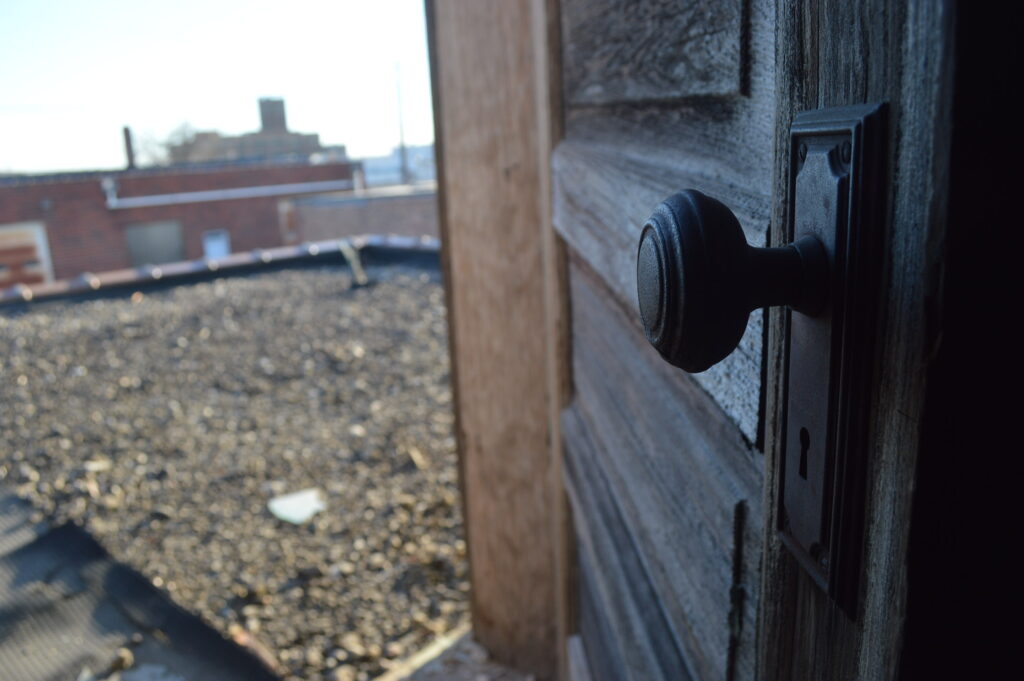
CEDAR RAPIDS, Iowa — City leaders used sledgehammers to mark the beginning of a multi-million dollar project that will replace a century of history with a four-story apartment complex.
Taking swings at the solid brick Banjo Refrigeration building, constructed in 1910, no one made a dent until Mayor Brad Hart cracked a window during the “demolition-commencement ceremony” for the Banjo Block property on Dec. 15, 2021.
Hart noted that the project has been a decade in the making.

TWG of Indianapolis, Indiana, plans a $49 million development with 224 housing units on the site, encompassing the entire city block across from the Cedar Rapids Public Library.
D.W. Zinser has started demolition preparations, including removing trees that survived the 2020 hurricane-strength derecho, which took out an estimated 70 percent of the tree canopy in Cedar Rapids. Hart said TWG would be required to replace the trees.
As with many developments in Cedar Rapids, the slate will be wiped clean before construction begins.
That includes eliminating more than a century of history in the Banjo Block.
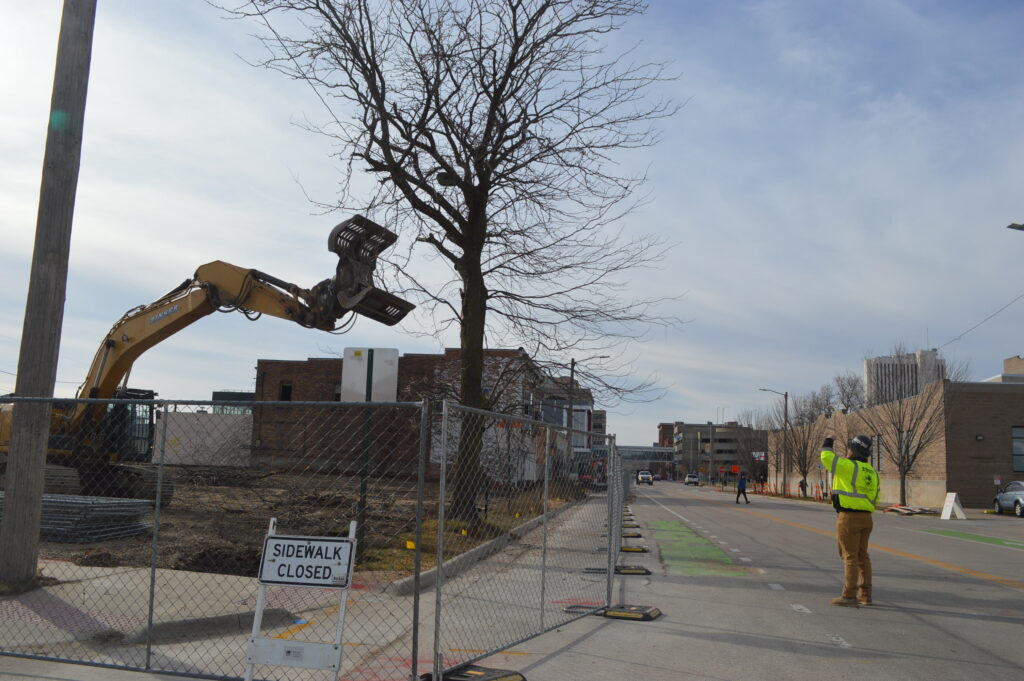
Five buildings, encompassing eight storefronts on Fourth Avenue and Fifth Street SE, are scheduled to be demolished.
The oldest date back to 1910.
Star Soft Water and Dry Cleaning opened that year at 509 Fourth Ave. SE, and operated there until 1943, according to Cedar Rapids Historian Mark Stoffer Hunter.
Refrigeration Equipment Company & Ice Machine, owned by the Melsha family and later known as Banjo Refrigeration, opened at the site in 1945, and operated continuously at that location through October 2021.
The brick building is the namesake for the Banjo Block, although a neighboring building has been more recognizable on the site. The two-story structure with bay windows, at 515 and 517 Fourth Ave. SE, also was built in 1910.
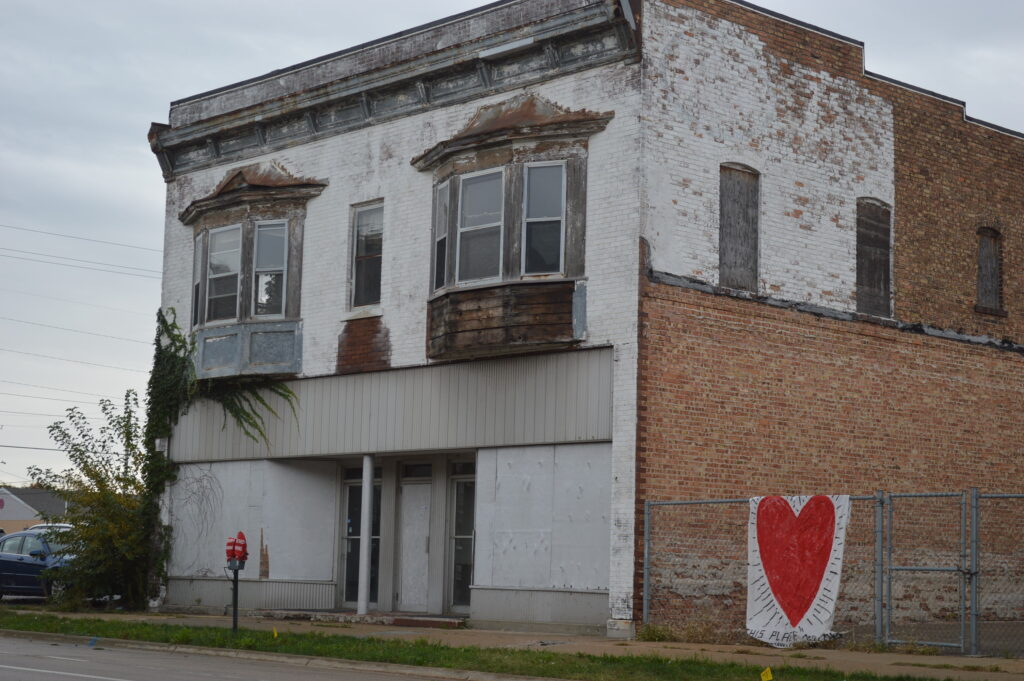
According to Stoffer Hunter, the 515 storefront originally housed the Night Commander Light Company, while 517 was the location of the Charles Lydick grocery store, with upstairs apartments.
Stoffer Hunter noted a shoemaker shop, operated by Gus Samos, operated out of 515 by 1920, while the grocery store was then operated by the Trombino family. Both storefronts were used by the J.T. Ure Tile Company through the 1940s and 1950s.
He said competition forced the tile company to downsize, and they shared space with the Cedar Rapids Auto Club by 1960. By the late 1960s, the first level was occupied by the AAA Travel Club until the 1980s.
Ornate tin ceilings, used as a means of fire protection between floors, were recently uncovered under the drop ceilings and portions were salvaged by Terry Philips and Sandra Johnson of Mills Seed Co. in Washington, Iowa.
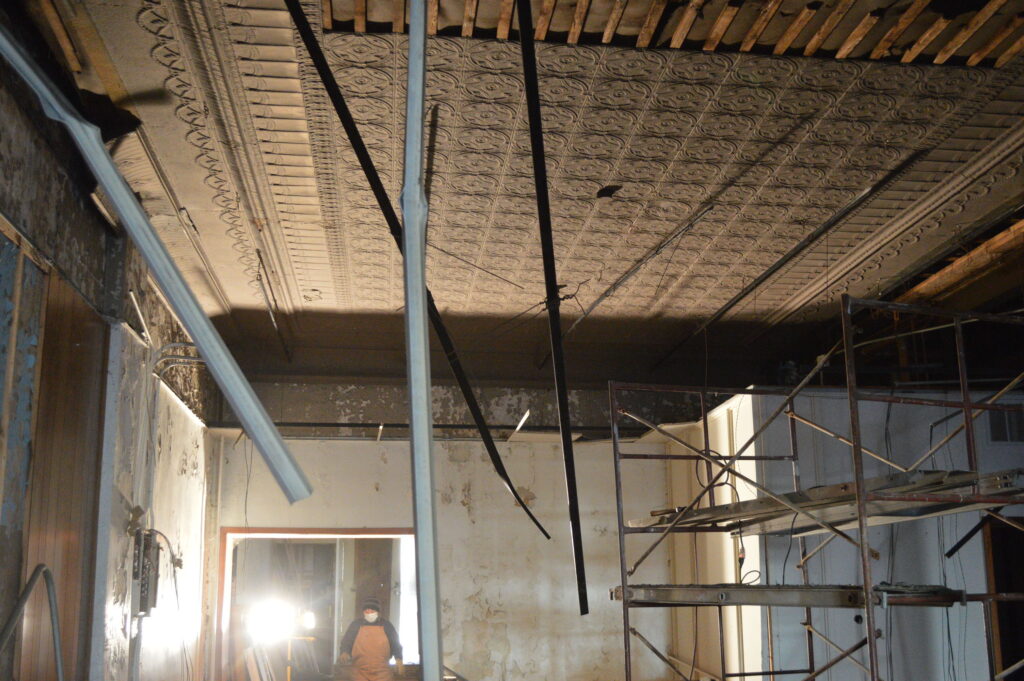
The one-story structure behind the two buildings was constructed around 1915, with the capacity to hold 16 automobiles, Stoffer Hunter said, and a 5,000-gallon tank located near the alley.
A brick house on the lot had been used as apartments before it was demolished, with two of the infamous “Cherry Sisters” living at 508 Fifth Ave. SE in the early 1940s, he said.
Stoffer Hunter provided the following on the other “Banjo Block” buildings:

The storefront at 501, 503 and 505 Fourth Ave. SE was built in 1919, with 501 housing a pharmacy; 503 containing a grocery store and 505 home to the Denecke Bakery. The Robert Melsha family occupied 503 with Banjo Refrigeration in the 1930s and the entire building merged by the 1970s to house Paulson Electric.
It was most recently home to Dupaco Credit Union.
The single-story cinder block structure at 420 Fifth St. SE is the newest building on the site, constructed in 1952 as the 420 Club & Grill, and later, the Stop-Off Tavern in the 1980s.
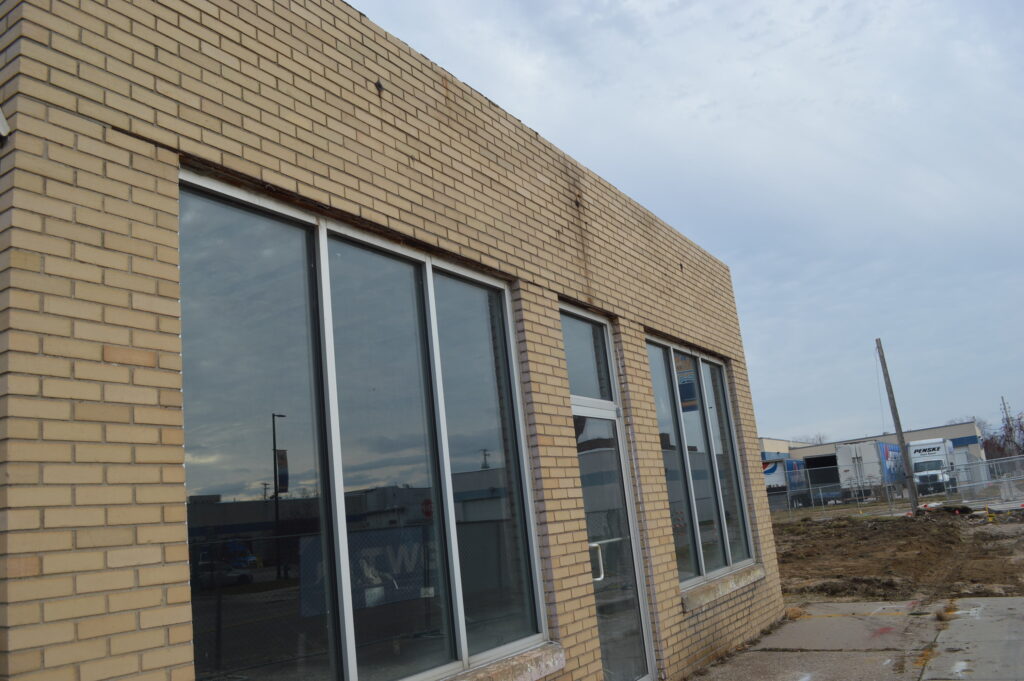
Although recently vacant, several of the buildings, with their rustic brick appearance, have been a favorite of photographers who have taken senior portraits, wedding party photos and more at the site. The buildings were not evaluated to see if they would qualify for listing on the National Register of Historic Places.
Save CR Heritage has asked the city and state of Iowa to end financial incentives for projects that involve the demolition of historic buildings.
The nonprofit, which is headquartered just across the street from the Banjo Block, took up a petition that would require developers receiving incentives who choose to build in a historic district or where a building on, or eligible, for the National Register of Historic Places is located to incorporate those structures into the development or move the building, at their own expense, but the Cedar Rapids City Council has not taken action on the petition.
More: Tour offers last glimpse of history as demolitions loom
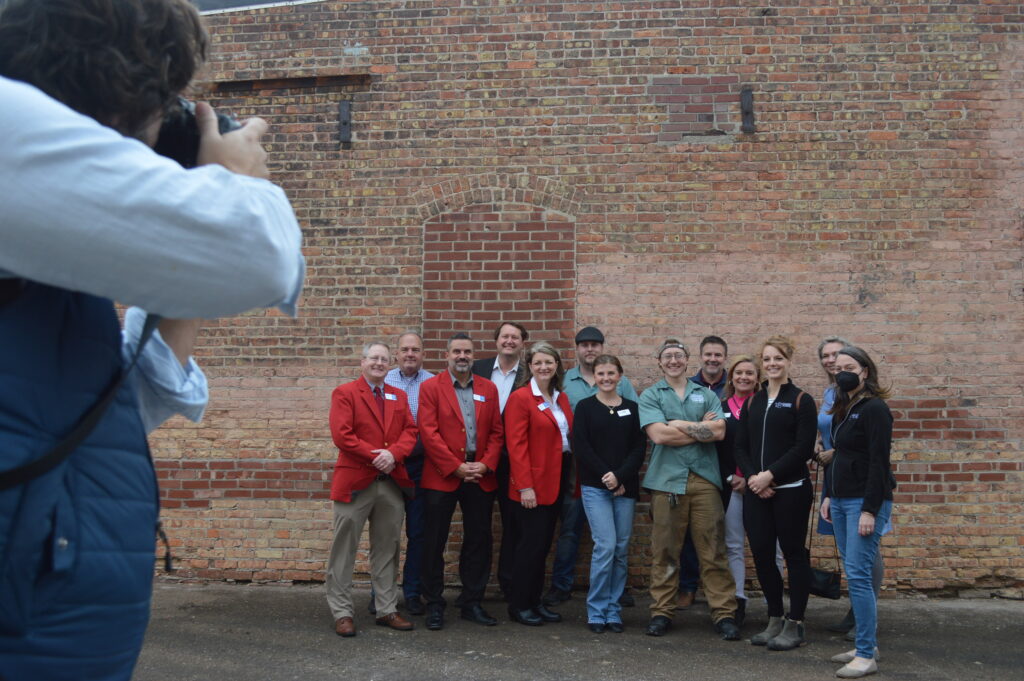

Cedar Rapids has so few historic buildings remaining. I looked at these buildings frequently and thought they looked really interesting. Sad that our history has been demolished. We were in Madison WI a couple of years back. So many historic buildings remain. Such a contrast.
Agreed, Brook. It’s baffling how Cedar Rapids fails time and again to appreciate buildings with character that were constructed to last for generations. So many lost opportunities.
For generations the leaders of CR have prioritised anything shiny and new over anything with history, character, durability or sustainability. Going back gets harder and harder.
So true.
We are waging the same battle in the Valley Junction area of West Des Moines. Our alleged “leaders” have no concept of the definition of “historic.” All signage that leads people to shop in the area states it is “Historic Valley Junction.” At the rate they are going, there won’t be any stores left.
Sorry to hear that, Sarah. We can definitely relate to what you’re experiencing.
Hey Cindy, this is Steve Frevert – now the Main Street director in Valley Junction. As you know, I am a building hugger. A few noncontributing buildings were torn down and replaced here before I started, and now a one story cinder block, non-contributing building is slated for demolition and redevelopment (with substantial public appreciation). We’re working on design guidelines that should help preserve what’s historic here without freezing the district in amber (we’re not Colonial Williamsburg). The reports of Valley Junction’s demise are greatly exaggerated; I’m happy to meet with anyone about this.
Thank you, Steve! We’ll let people know.
Any and most character and history in Downtown has been demolished with eagerness by the city council. Hopefully our new mayor can bring this practice to a screeching halt ! We have a large library that has so many windows that are cold and drafty in the winter and hot in the summer. Not many folks hanging out by them. Many empty shelves in that new library.
New and expensive is NOT better by any means!!!
Well put, Bonnie!
[…] Related: CR takes sledgehammer to history […]
[…] Liberian Dish, as construction remains underway on a four-story apartment complex in the former Banjo Block, across from the Cedar Rapids Public […]